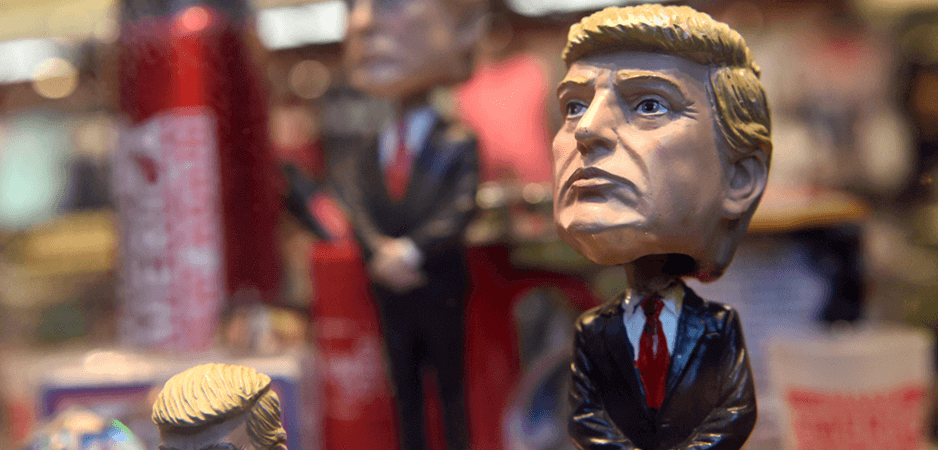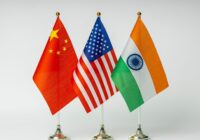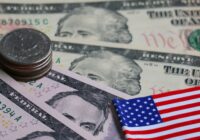Trump’s policies are boosting inflation, stimulating asset values, depreciating debt, increasing growth prospects and decreasing Democrat chances at the forthcoming polls.
As has been well documented by Fair Observer and other media outlets, the presidency of Donald Trump is mired in confusion. What the media seems not to have understood is that a simple unifying agenda underlies almost every major policy decision that this administration has made: a desire to stimulate inflation in the US dollar.
The fact that the press, both foreign and domestic, has not picked up on this is a masterstroke of subterfuge from one of the grand masters of media manipulation. For the unifying set of policies is neither deceptive nor particularly surprising. It aligns both the president’s personal and political agenda in a most transparent manner. And once spotted, it can be used not only to rationalize all of Trump’s major political moves in his first 18 months in office, but also to chart a roadmap for the next seven years.
Donald Trump is, first and foremost, a real estate magnate. There may be no man alive whose wealth has been more closely tied to leveraging the difference between the real and the nominal. In real estate, asset prices move in line with the real economy, while the debt that is used to finance assets is (largely) fixed (i.e. nominal). Stimulate real asset prices and the value of the debt is inflated away.
INFLATION MAKES SOME PEOPLE RICH
Sharp and unexpected jumps in inflation are the quickest way for owners of real estate to benefit from this inflationary effect; a fact that will not be lost on the president, who made his first fortune in the early 1980s when inflation spiked on the back of an oil crisis triggered by the 1979 Iranian Revolution. It was in 1982 that Trump first made it to the Forbes 400 list of millionaires with an estimated wealth of $100 million.
Today, few stand personally to gain more than Trump from another spike in oil prices. Unsurprisingly, the president has pulled out of the Iran nuclear deal. According to Haaretz, this is “a move that raises the risk of conflict in the Middle East and casts uncertainty over oil supplies in an already tight market.” Naturally, oil prices have risen to their highest level since November 2014.
Rising oil prices would boost inflation and, in turn, boost the fortunes of the Trump family. Such blatant self-interest would be bound, eventually, to undermine the current administration if it wasn’t for a convenient fact. Fortuitously for Trump, a reasonable argument can be made that a sharp increase in inflation would boost the American economy. Even though the US Federal Reserve aims to keep inflation at the 2% level, higher inflation might just be a way to “Make America Great Again,” the catchy slogan of Trump’s election campaign in 2016. The logic for it is simple. Both government and personal debt in the US is dangerously high. Inflation has long been a surefire way to whittle down mountains of debt.
For a long time, the specter of a Japanese-style stagflation has haunted the US. Like the Bank of Japan, the Federal Reserve deployed quantitative easing as a means to avoid a depression. This led to a rise in asset prices such as shares and real estate. It did not, however, have a material impact on inflation. Trump’s policies might.
In the two years that remain before his re-election campaign kicks off, Trump may not make America great again, but he can certainly stimulate the economy, at least for the short term. Inevitably, two phenomena will color public perception.
First, the middle class and the swing voters will be influenced by the health of their 401Ks. In the first year of Trump’s presidency, the Dow Jones Industrial Average has gained more than during the first year of any president since World War II. If inflation kicks in, then the apparent (nominal) value of dollar-denominated asset values will rise. So will stock market indices. Americans will feel rich again and might well re-elect their leader.
Second, as inflation starts to exert upward pressure on wages, Americans will begin to see a smaller proportion of their wages being sucked up by mortgage payments. As the value of their homes rise, their mortgage payments will seem ever more reasonable. Furthermore, in the short term, inflation could well artificially kick-start American growth, creating new jobs in the economy. These feel-good factors are bound to benefit Trump, come 2020.
FOUR HORSEMEN OF INFLATION
Let us turn to apparently unconnected phenomena that have dominated the press since Trump took office: confusion in administration, trade wars, impulsive foreign policy and abandoning any action on climate change.
Confusion at home breeds instability in the dollar. Fewer people want to invest in a country run by a madman. However, the US dollar is still the world’s reserve currency. Rich Chinese, corrupt Indians and scared Russians are still trying to ferret their wealth to the land of Uncle Sam. Hence, the Trump effect is muted but the perception of Washington in disarray has certainly caused downward pressure on the dollar. This increases the costs of imports, stimulating inflation.
Similarly, trade wars fuel inflation. Trade wars involve the introduction of tariffs, quotas and more. These inflate the cost of foreign goods directly. The president’s assertion that trade wars will stimulate domestic production and rescue the beleaguered American working class is a sleight of hand: It may happen, but in doing so it is sure to increase asset prices.
Foreign policy, too, is stimulating inflation. The Iran deal is the most spectacular example of this phenomenon because oil prices spiked. Numerous other examples, such as Trump’s actions in Syria or his shenanigans with North Korea, are heightening geopolitical instability. Instability invariably causes inflation.
By pulling out of the 2015 Paris Climate Accord, Trump has managed to unshackle any fetters on the oil industry. The now-defunct accord was toothless, but it was hugely symbolic. The US had penned its signature to a document full of pious homilies about fighting climate change. Now, Trump has declared that the age of oil will continue. In doing so, he has got a good deal for gas guzzling America and showed that if he’s in for a penny, he’s in for a pound.
If these policies had been implemented by a more conventional president, then they might have been noticed by the media. However, Trump is far from transparent: Crucially, he has failed to publish the tax records that would make his motives painfully obvious. Further confounding variables such as not conducting foreign policy through the State Department add further smoke and mirrors. A bit of deep, hard thinking should make Trump’s agenda clear to the world. However, the political maelstrom in which the president operates has proved to be the perfect subterfuge.
If Democrats hope to take back control of the House and Senate in the 2018 midterm elections, they need to stop getting caught up in fuming over Trump’s tweets and the circus surrounding him. They have to start focusing on undermining the inflationary play, strategic or tactical, which is helping to line the pockets of this increasingly unpopular man.
When Democrats begin to do so, they may have to take a long hard look at the facts and try to understand whether the president hasn’t got the right idea. More than 126 million homeowners have personal balance sheets that are directionally similar (albeit more modest than) to the president’s. Similarly, nominal 401Ks balances have risen so far at a nearly 10% higher rate than during Barack Obama’s time.
Consequently, Americans might find themselves concluding that the supposedly mercurial lunatic is doing a surprisingly good job of making America great again. If last time it was the economy, stupid, this time it’s the inflation, stupid.
The views expressed in this article are the author’s own and do not necessarily reflect Fair Observer’s editorial policy.
Photo Credit: Bumble Dee / Shutterstock.com
Support Fair Observer
We rely on your support for our independence, diversity and quality.
For more than 10 years, Fair Observer has been free, fair and independent. No billionaire owns us, no advertisers control us. We are a reader-supported nonprofit. Unlike many other publications, we keep our content free for readers regardless of where they live or whether they can afford to pay. We have no paywalls and no ads.
In the post-truth era of fake news, echo chambers and filter bubbles, we publish a plurality of perspectives from around the world. Anyone can publish with us, but everyone goes through a rigorous editorial process. So, you get fact-checked, well-reasoned content instead of noise.
We publish 2,500+ voices from 90+ countries. We also conduct education and training programs
on subjects ranging from digital media and journalism to writing and critical thinking. This
doesn’t come cheap. Servers, editors, trainers and web developers cost
money.
Please consider supporting us on a regular basis as a recurring donor or a
sustaining member.
Will you support FO’s journalism?
We rely on your support for our independence, diversity and quality.






